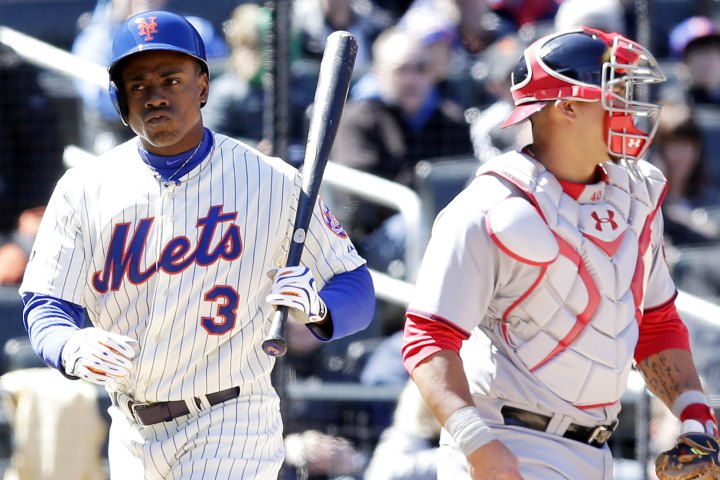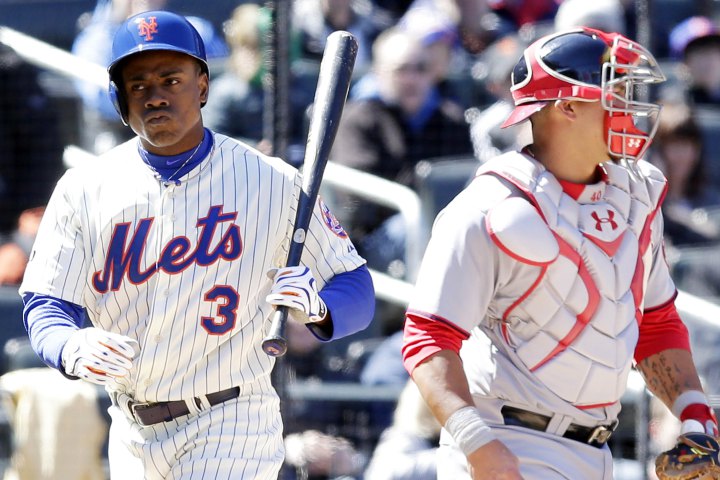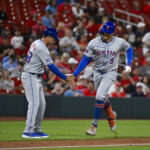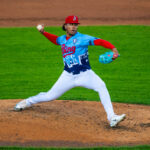
An adaptation is a trait that plays a role in the survival of a given organism. Animals adapt to their surroundings by means of natural selection because those who are not well adapted to their environments die off — like a penguin in the Sahara. Humans adapt as well … my wife tells me I am well adapted to carrying stuff and she insists she’s adapted to telling me to carry stuff. She may have a point. The rule applies to most competitive habitats, even the baseball diamond. Some teams are more adapted to their environments than others.
The mark of any good team, however, is not only how well adapted they are to their surroundings but how well they perform against top teams, and in 2014 The Mets did not do so well. Out of all the playoff teams on the Mets schedule, the only one they had a winning record against was the Cardinals against whom they went 4–3. The Mets split against the A’s, lost season series against the Dodgers and Pirates (2–4 and 3–4 respectively) and lost badly against the Giants and Nationals (1–6 and 3–15). That comes out to a combined 15 wins and 34 losses against playoff bound opponents which is a .306 winning percentage for those of you keeping score at home. While the Mets did beat up on many lesser clubs, you aren’t going to get very far in this league if you do that poorly against the upper echelon … Bottom feeders tend to stay near the bottom.
Below is a breakdown of where the playoff teams on the Mets schedule ranked respectively for ERA, OPS and UZR … As you can see Mets pitching and defense ranked up there with some of the better teams, but the offense was abysmal. Also of note is that arguably the most balanced team in the league in terms of offense and pitching (the Dodgers) was promptly bounced from the playoffs, as were the Pirates and Nationals, with all three sporting bottom third in the league defensive rankings. The Giants, who are looking like they might win the world series, have done it with an average offense, an average defense, and very good pitching.
| Mets vs | ERA | OPS | DEF/UZR |
| (3–15) Nationals | 1st | 8th | 20th |
| (4–3) Cardinals | 11th | 18th | 6th |
| (1–6) Giants | 10th | 14th | 15th |
| (2–4) Dodgers | 6th | 3rd | 23rd |
| (3–4) Pirates | 8th | 5th | 27th |
| (2–2) A’s | 3rd | 13th | 8th |
| TOTAL (15–34) Mets | 9th | 26th | 11th |
The takeaway here is that with a little improvement to the offense the Mets should be able to keep pace with some of the better teams. As the Cardinals and Giants (and the A’s) showed, the Mets don’t even necessarily need a great offense. The league averaged a .700 OPS in 2014, so for the Mets, who had a .673 OPS, a .027 point bump might just do it.
The Giants and Nationals absolutely killed the Mets to the tune of a combined 4 wins and 21 losses and they did it by matching Mets pitching and outhitting them. Against the Giants it was particularly frustrating because they didn’t outhit the Mets by much, but they didn’t need to, which is an important point.
If the Mets had even a slightly better offense this past year they would have been in a lot more ballgames. Unlike the Giants, the Nats outhit the Mets handily, and they capitalized on all of the Mets’ weaknesses. Not only was their pitching better, they walloped the Mets offensively, and, to rub salt in the wound, it sure felt like they kept Mets contact rates down by striking the hell out of them thereby insulating the problematic Nationals defense. Had the Mets made more (or better) contact against the Nats they may have fared somewhat better … but nope, the Mets couldn’t even take advantage of their one true weakness.
The Mets simply need to make more contact. There is a general sense among fans that the Mets strikeout too much, but is there any truth to that?
The weird thing is that the Mets’ contact rates weren’t all that bad.
| Plate Discipline: | League | Mets |
| Z Contact % | 87.3 | 87.6 |
| O Contact % | 65.8 | 66.1 |
| Contact % | 79.4 | 80.2 |
| F Strike % | 60.6 | 61.1 |
| Sw Strike % | 9.4 | 8.8 |
| Z Swing % | 65.7 | 64.9 |
| O Swing % | 31.2 | 28.8 |
According to the above, the Mets made slightly more contact than the rest of the league on pitches inside the zone (z contact) and outside the zone (0 contact), and the Mets also had a lower swinging strike percentage and swung at fewer pitches both in the zone (z swing) but especially out of the zone (o swing), all good things. The league struck out 20.4% of the time while the Mets struck out 21.1% of the time which is less than a 1% difference. The Mets also walked 3.13 times per 9 innings to the league’s 2.89/9, so in general Mets plate discipline was pretty solid.
Mets batting average on the other hand was .239 and as a team they slugged .364 to the league’s .251 BA and .386 SLG — kind of a significant difference. They also had a BABIP of .286 to the league’s .299, so the Mets may have also been slightly unlucky, but I dislike BABIP for one important reason — low BABIP sometimes has nothing to do with luck and everything to do with poor contact (we’ll get back to that later). Additionally, the Mets had a 75.7% left on base percentage to the leagues 73% … they left a lot of guys on base.
Yes, the Mets did strikeout slightly more than the rest of the league (especially at home where they struck out 2.6% more than they did on the road), but they walked a lot more too, and, while their plate discipline was decent, they left a ton of guys on base. The Mets clearly got on base at a healthy clip, but they stalled far too frequently.
Why? What killed the offense? Was it the Mets’ marginally higher tendency to strike out? Was it a lack of aggressiveness? (I don’t think their plate discipline metrics support that at all). Was it bad luck? Turns out it wasn’t any of those things. The Mets didn’t strike out that much more than the rest of the league but they made outs a lot more on balls in play … which brings us back to BABIP and the real culprit.
The Mets had the 4th highest flyball percentage in baseball at 36.7%, and even more astonishing, they had the second lowest ground ball rate at 42%. The Mets are essentially a team built for a band-box playing in a pitcher’s park (which explains why they did so well against the Phillies). Now, I get the whole “chicks digging the long ball” thing, but the Mets are not really well adapted to Citi Field’s expansive dimensions … their flyball rates are way too high and they hardly ever hit the ball on the ground. Hopefully the Mets front office will address this disparity this off-season by signing a hitter or two with a knack for line drives and ground balls through the hole.
Will the fly ball problem be somewhat mitigated by bringing in the fences? Maybe … it doesn’t help that the Mets are an extreme flyball team playing in an extreme flyball park. What the Mets don’t need are more all-or-nothing flyball hitters.
The Mets clearly need to do a better job of adapting their roster to their home confines or they will suffer the fate of the dodo and the triceratops.















